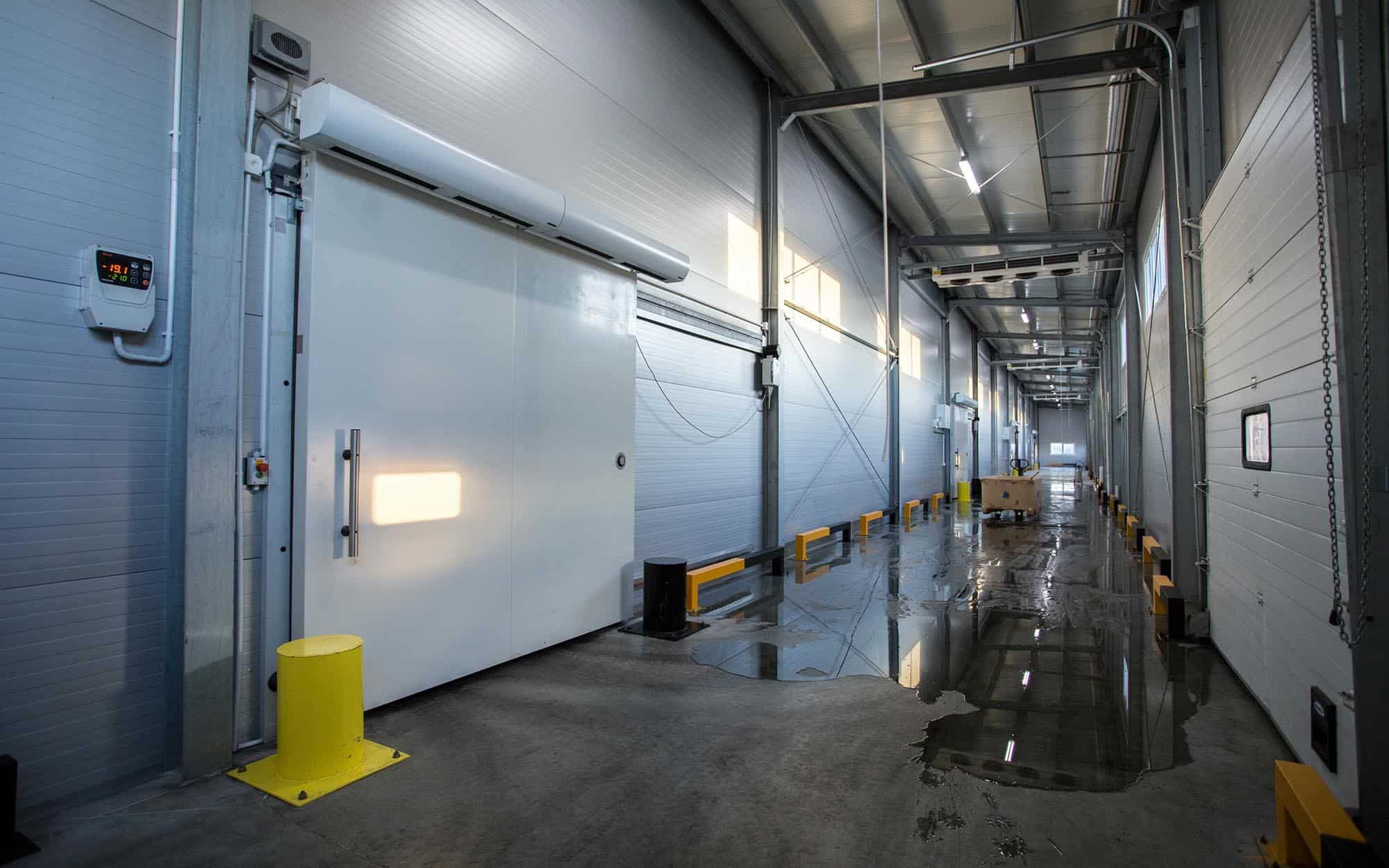
If your business handles and ships food products, you know the quality of frozen food matters. You also know it can change quickly depending on how it’s frozen and stored. But which is the best method of freezing food, and how does it work? Let’s look at the blast freezing process and compare it to other, slower freezing methods.
Key Concepts
This post covers the following concepts:
- How blast freezing works
- Other quick methods of freezing
- How slow freezing methods work
- The benefits of blast freezers
- Why use FW Warehousing’s food storage and blast freezing services
How Does Blast Freezing Work?
The blast freezing or flash freezing process works by blasting food products with cold air and sucking the hot air out of them simultaneously. This process occurs in a blast freezing chamber that accommodates the exchange of hot and cold air. It uses refrigerant to remove heat from the chamber’s air and turn it into gases that exist outside of the food products they just left. The blast chilling process repeats itself, pumping the products with cold air and pulling the hot air away until the products reach -18 degrees Celsius (-0.4 degrees Fahrenheit).
Other Quick Methods of Freezing
Blast freezing cools products rather quickly, but it’s not the only way to freeze your products. Other quick freezing methods include:
- Cryogenic Freezing: When you hear this term, you may think of the urban legend that Walt Disney was cryogenically frozen beneath Disneyland (which isn’t true), but this freezing process does have real-world applications. This process exposes food products to cold air at -60 degrees Celsius (-76 Fahrenheit), which are created with liquid carbon dioxide or liquid nitrogen. While this process freezes foods efficiently, you need to control the process tightly to get consistently good results.
- Plate Freezing: This freezing process only works on square or rectangular products. When you plate freeze food products, you place each product between a pair of plates that push against it and lower the product’s temperature.
- Immersion Freezing: This type of freezing submerges food products into cold liquids like sugar solutions, glycerol solutions, alcohol solutions, or sodium chloride. If you use this process, you need to consider how the solutions affect your products’ flavor, health components, and color. The wrong solution could ruin your food products.
How Slow Freezing Methods Work
The methods described above freeze products in a few hours or a few days. But slow freezing takes several days or weeks to cool frozen foods. Slow freezing usually occurs in storage freezers where food products sit on the shelf and gradually grow cool. While this process sounds easy, it gives your food products more time to grow bacteria or let large ice crystals form on their surfaces. It also allows your foods to lose many of their nutrients.
Learn more about the blast freezing process from FW Warehousing.
The Benefits of Blast Freezers
When you cool your frozen foods down in a blast freezer, you reap a variety of benefits, including:
- They cool down your products quickly enough that you don’t have to worry about freezer burn.
- When you blast or flash freeze food, you freeze it before it has a chance to develop bacteria that could make your customers sick.
- Blast freezing helps slow down enzyme production in food products. Enzymes help frozen fruits and vegetables ripen, and they give other foods their taste. Slowing enzyme activity prevents frozen foods from ripening too quickly or changing their taste.
- It prevents large ice crystals from forming on your products and leeching the water out of them.
Why Use Our Blast Freezing and Food Storage Services
We’ve handled food products for years, and we’ve perfected our food storage and blast freezing services in the process. We blast freeze your products down to their correct storage temperatures first. Then we store them in the appropriate storage space, be that frozen, temperature-controlled, or climate-controlled storage. We help you determine which types of freezing and storage suit your products, and then we apply those services to them.
If you’re ready to take advantage of our blast freezing and food storage facilities and services, reach out to us today.

